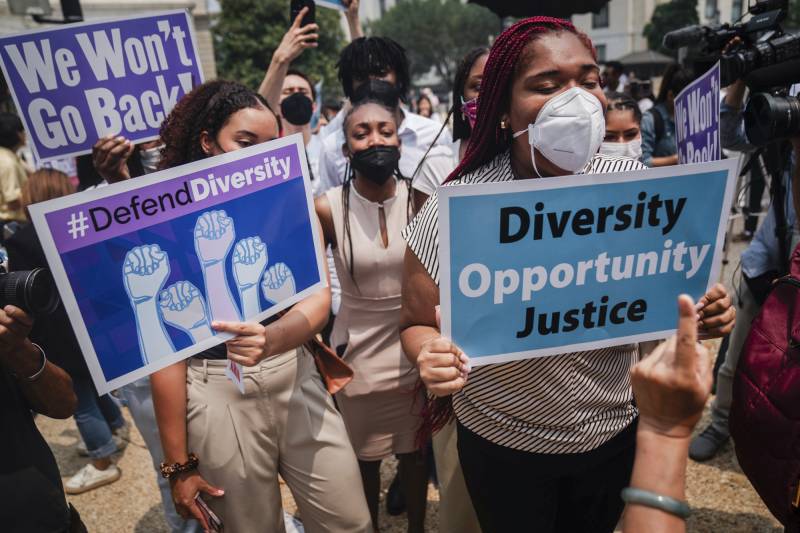The U.S. Supreme Court’s conservative majority on Thursday rejected race-conscious admission policies at Harvard and the University of North Carolina, ruling them a violation of the Constitution’s guarantee of equal protection. The historic 6-3 decision is the latest word in a fierce protracted fight over affirmative action in university admissions.
Scroll through the following interactive timeline — or read the full text below it — to learn about some of the key moments in a longstanding debacle over race, education and opportunity in America.
1954: Brown v. Board of Education
In a unanimous decision, the Supreme Court discredits the concept of “separate but equal,” ruling that segregation in public schools violates the Equal Protection Clause under the 14th Amendment. The decision is vehemently opposed by segregationists, and it takes years before many segregated schools in the South are forced to integrate.
1961: JFK references ‘affirmative action’
President John F. Kennedy issues an executive order mandating that projects financed with federal funds “take affirmative action” to ensure there is no racial bias in hiring and employment practices.
1964: Civil Rights Act
President Lyndon B. Johnson signs the most sweeping piece of civil rights legislation since Reconstruction. The new law prohibits discrimination in various settings, including hotels, schools and government services. It prevents employers, labor unions and employment agencies from excluding applicants and customers on the basis of race, sex, color, religion or national origin. A commission is established to enforce the law.
1965: Johnson defines affirmative action
In a graduation speech at Howard University — a historically Black college — President Johnson insists it is not enough to just have laws that prohibit discrimination, arguing that more proactive measures are necessary. “You do not take a man who for years has been hobbled by chains, liberate him, bring him to the starting line of a race, saying, ‘You are free to compete with all the others,’ and still justly believe you have been completely fair,” he said. Later that year, Johnson issues a new executive order requiring government contractors to “take affirmative action” to ensure racial equality in hiring and employment.
1978: Racial quotas at University of California struck down
In Regents of the University of California v. Bakke, the U.S. Supreme Court strikes down a UC policy that reserved admission slots for minority applicants, ruling it a violation of the Equal Protection Clause of the 14th Amendment. The court says UC can continue to consider race and ethnicity as a factor in the admissions decision as long as it doesn’t have specific quotas in place. The case originated when Allan Bakke, a 33-year-old white student who was twice rejected from UC Davis Medical School, filed suit, claiming it was unfair that minority applicants with lower academic standing were accepted over him.

